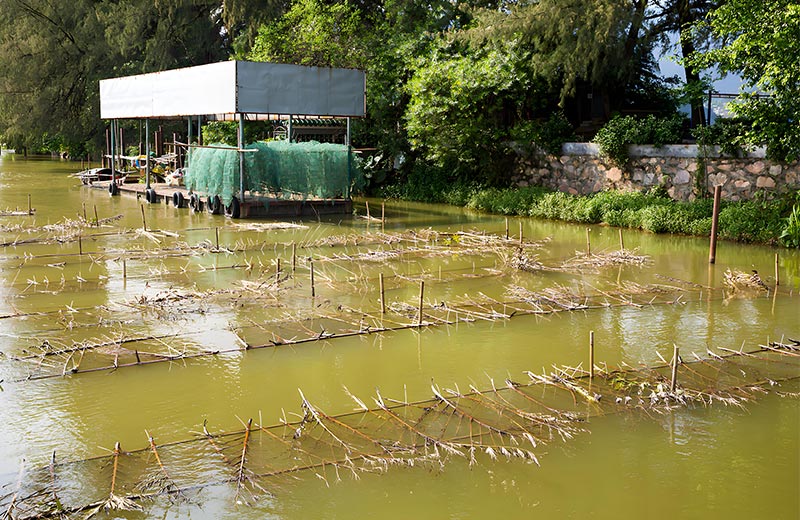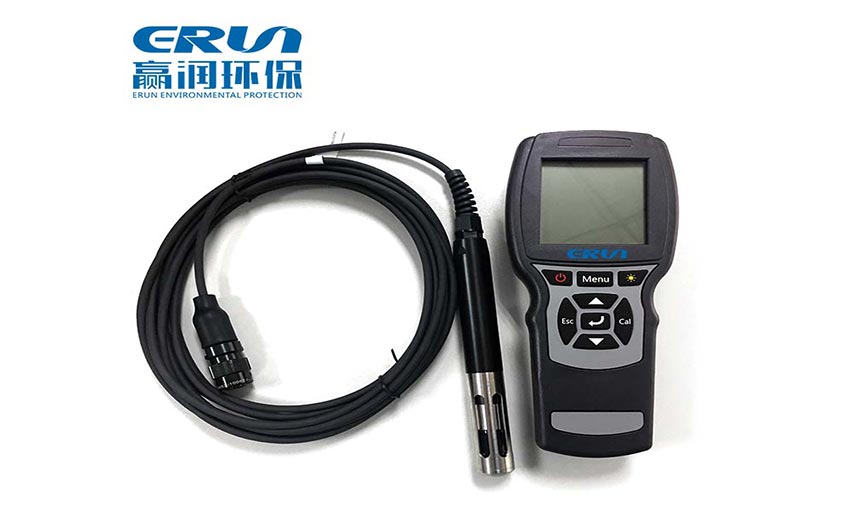The success of an aquaculture operation depends to a large extent on the quality of the water.Water quality testing, as an important part of the aquaculture process, aims to ensure that the water quality meets the growth needs of aquatic organisms, prevents diseases and improves aquaculture efficiency.This article will detail several key water quality testing indicators in aquaculture to help farmers better understand and apply them.

pH is an important indicator of the acidity or alkalinity of a body of water.Suitable pH range for freshwater aquaculture is 6.5 to 8.5,for mariculture, the range is between 7.0 and 8.5.The normal daily range of pH values is usually 0.5 to 1,Exceeding this range may indicate abnormal conditions in the water body.A low (below 4.4) or high (above 10.4) pH can result in a significant increase in fish mortality.Therefore, regular testing and adjustment of the pH value of water bodies is an important measure to maintain stable water quality and ensure the healthy growth of aquatic organisms.
Dissolved oxygen is the oxygen dissolved in water, which is necessary for aquatic organisms such as fish and shrimp to carry out respiration and maintain life activities.Dissolved oxygen levels should be maintained above 3 mg/L.Suitable dissolved oxygen concentrations are above 5 mg/L for most cultured species.If dissolved oxygen falls below 2 mg/l, fish will experience respiratory distress, slow growth or even death.Excessive levels of dissolved oxygen (above 12 mg/l) may also lead to bubble disease in fish and shrimp.Therefore, regular testing of dissolved oxygen content and taking appropriate measures to increase oxygen as needed is the first priority in ensuring good water quality and promoting the healthy growth of aquatic organisms.
Water temperature is one of the most important factors affecting the growth and metabolism of aquatic organisms. Different species of fish and shrimp have different ranges of adaptability to water temperature.For example, turbot is a cold-water fish, suitable for water temperatures between 12 and 18 degrees; while the South American white shrimp prefers high water temperatures and grows faster above 22 degrees Celsius.Water temperatures that are too high or too low may adversely affect the growth and reproduction of aquatic organisms. Therefore, farmers should reasonably control the water temperature according to the characteristics of the cultured organisms to provide a suitable growing environment.
Ammonia nitrogen is a common harmful substance in the aquaculture process, which mainly originates from the decomposition process of organic matter such as excreta and residual bait of fish and shrimp.Ammonia nitrogen exists in water in the form of free and ionic ammonia; molecular ammonia is extremely toxic to fish and can lead to toxemia.Fish can show signs of ammonia toxicity when ammonia levels exceed 2.00 mg/L. Therefore, regular testing of ammonia nitrogen levels in the water column and taking appropriate treatment measures to reduce its concentration is the key to preventing ammonia nitrogen poisoning.
Nitrite is also a harmful substance in the water body, mainly from the nitrification process of ammonia nitrogen. The content of nitrite should be controlled below 0.2 mg/liter, and some breeding species even require control below 0.05 mg/liter. High concentrations of nitrite can cause toxic effects on aquatic organisms and inhibit their growth and reproduction ability.
Hydrogen sulfide is another substance that is harmful to aquatic organisms and originates mainly from the decomposition of organic matter and sulfate reduction processes in the water column.The Water Quality Standards for Fisheries include a sulphide concentration (in terms of sulphur) of no more than 0.2 mg/l.Hydrogen sulfide levels in the water column up to 0.1 mg/l may affect the survival and growth of young fish, and can kill all carp when 0.3 mg/l is reached.In nursery production, the concentration of hydrogen sulfide should be strictly controlled below 0.02 mg/l.
After a chlorine-based disinfectant has been used in a culture water body, some amount of chlorine may be left over, which is the residual chlorine in the pond.The concentration of residual chlorine in the water column should be controlled to less than 0.02 mg/l.Above 0.02 mg/L, it can have a corrosive effect on the mucous membranes and gills of fish and shrimp;Residual chlorine can be fatal to fish, shrimp and crabs when the concentration reaches 0.1 mg/L or more.
Total alkalinity is an important measure of buffering capacity in the water column and is particularly important for shrimp farming.For freshwater or low salinity shrimp culture, total alkalinity requirements are greater than 75 mg/L;For mariculture of shrimp, total alkalinity is required to be greater than 100 mg/L, and for nursery total alkalinity is required to be greater than 120 mg/L.Total hardness, on the other hand, refers to the amount of calcium and magnesium ions contained in the water. The appropriate total hardness for freshwater and warm-water fish is around 50 mg/liter, and for marine aquaculture it is usually between 80 and 120 mg/liter.
In addition to the main indicators mentioned above, heavy metal content (e.g., copper, chromium, iron, etc.), total nitrogen and total phosphorus content, and turbidity in the water body are also of concern in aquaculture.Excessive heavy metals and nutrients may trigger water pollution and eutrophication problems; high turbidity waters affect physiological processes such as feeding, light penetration and respiration of fish and shrimp.

In conclusion, water quality testing in aquaculture is a complex and detailed task.Farmers need to understand and accurately grasp the various water quality testing indicators, regular testing and take appropriate adjustment measures as needed to ensure good water quality, promote the healthy growth of aquatic organisms and maximize the benefits of aquaculture.We offer a full range of farm water testing solutions, contact us directly by email or phone.